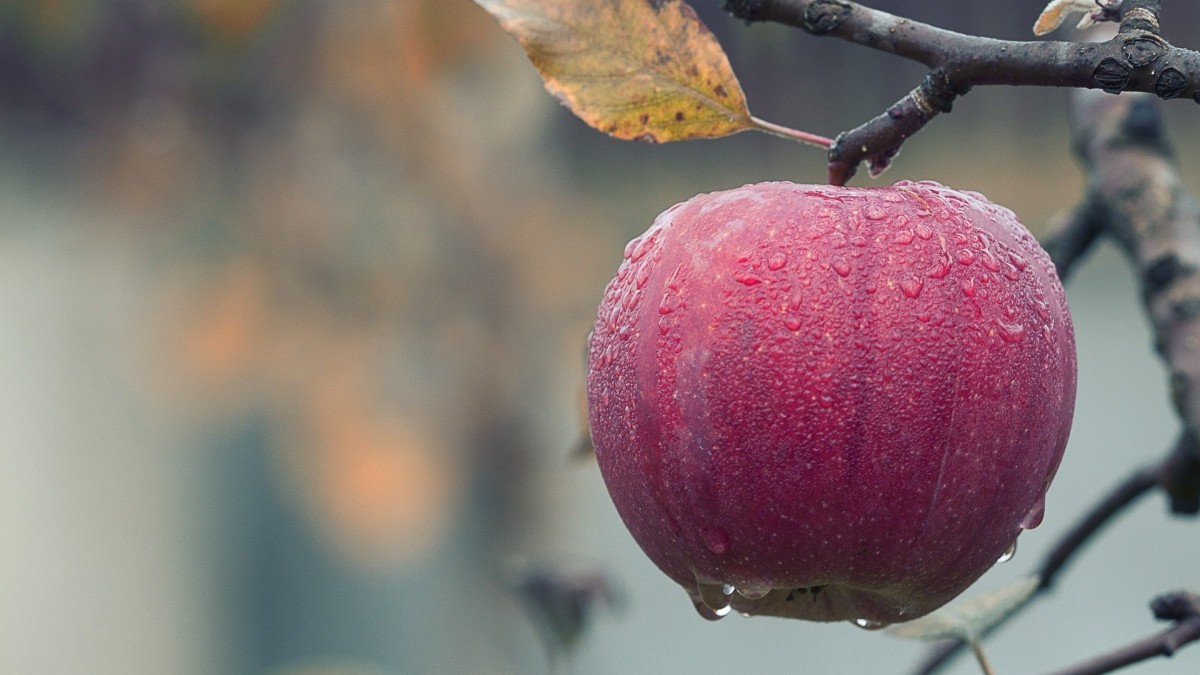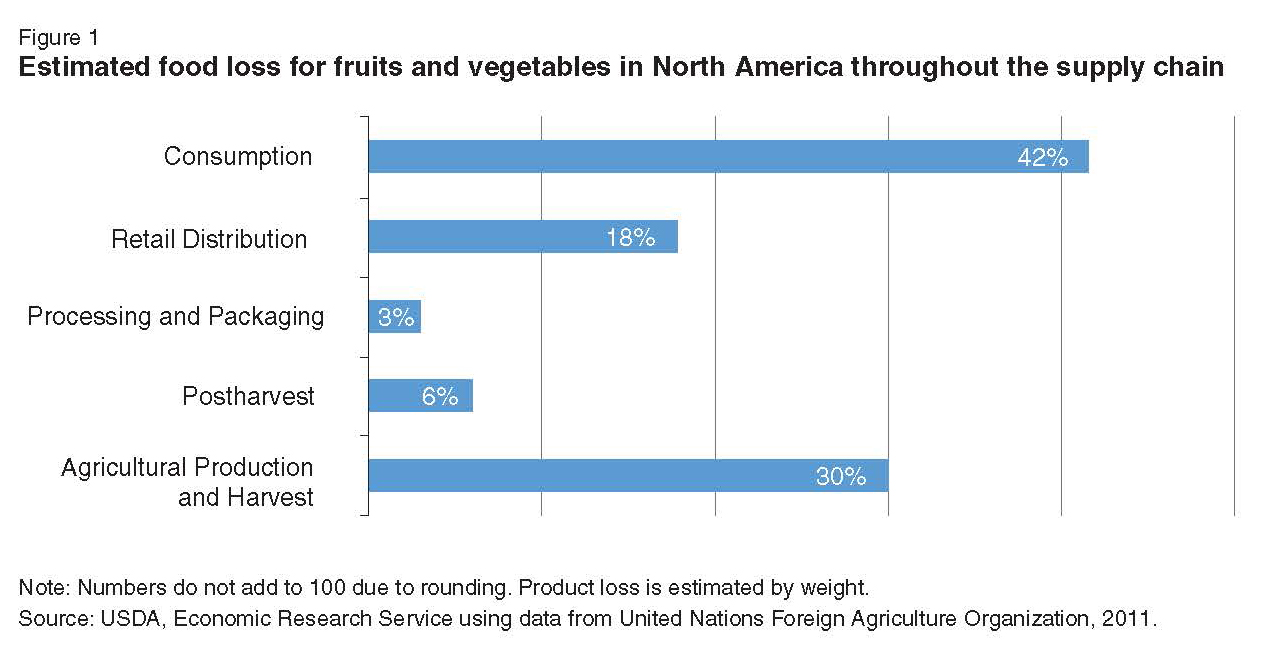Price volatility, consumer expectations drive massive food waste on the farm

Currently, nearly a third of the food produced in the United States never makes it to the grocery aisle — creating a huge waste problem. Two Arizona State University professors worked on a new federal report that highlights the complicated reasons for the losses and some potential solutions.
The research shows that the entire food chain is fraught with unpredictability, from how much it rains to how many farm workers show up for harvest to which apple will be plucked from the bin. Literal tons of food are thrown away at nearly every step of the way.
Meanwhile, 11.4% of households in the U.S. are food insecure, which means they don’t have access to enough food for a healthy life for all household members. In Arizona, the rate is 12.4%, or nearly 2.7 million households, according to the U.S. Department of Agriculture. That same federal agency released the new report on produce waste, which was requested by Congress.
W. P. Carey School of Business professors Tim Richards, who holds the Morrison Chair in Agribusiness, and Ashok Mishra, who holds the Kemper and Ethel Marley Foundation Chair in Food Management, were on the nationwide team of researchers who produced the report.
“You can decrease food insecurity by growing more crops, but there is limited land, water and fertilizer, so another way of increasing food security is to prevent those losses from happening,” Mishra said.
“If you can take that one-third and squeeze it down to even one-fourth, more food is going into the supply chain toward consumers.”
One of the main reasons for waste is consumer expectations, he said.
“We are very spoiled in America, where we think produce should be perfect. The apple has to be round and shiny and you don’t want any blemishes,” said Mishra, who edited a new textbook about produce waste.
In many developing countries, produce is sold at farmers markets, where consumers pick through the bins, paying the most for the best pieces and the least for the produce that is misshapen, bruised or small.
In the U.S., lower quality produce doesn’t even make it to the grocery store.
“All the middlemen will say, ‘My market will not take this produce,’ so now it’s out of the supply chain,” Mishra said. “They don’t want any crooked cucumbers.”
Here are other reasons why so much produce is discarded before it even reaches the store:
Price volatility
Growers must make a profit, and the price of fruits and vegetables fluctuates frequently, even within a growing season.
“It’s very speculative. You can’t forecast perfectly how many tomatoes you’re going to need and you don’t know the weather conditions or what will happen with the crop,” Mishra said.
“The farmer is looking at the cost of production — picking, packing, hauling, transportation. If he thinks the cost of doing all of this is greater than what he’ll get at market per ton, he might just plow the whole field under and do nothing because at least then he’ll save the costs.”
Plowing under a field of vegetables sounds shocking, but it allows the grower to save on the cost of fertilizing the soil.
“The farmer is doing everything based on dollars and cents. If he has sunk in $100 he wants at least $110 for it,” Mishra said.
Labor
Paying workers to harvest the food accounts for about 10% of total cost of production, and can be unpredictable.
Growers are facing a labor scarcity now. A combination of immigration issues and demographics (such as lower birth rates in Mexico) is reducing the supply of laborers. And, because of the increase in nonfarm wages due to the booming economy, laborers are finding jobs in other sectors, leaving more unskilled farm workers.
“Farmers are getting lower quality labor and paying the cost for training and retraining,” Mishra said.
Growers need workers during the entire production period, but at harvest, there’s a “continuous, time-sensitive, and often greater, demand for labor,” the report says. If enough workers are not available at the right time, or if the cost is too high, growers may leave the field unharvested.
Labor costs also vary widely by category. For delicate peaches, it’s 20%, while for potatoes, which are mechanically harvested, it’s 7%.
Supply-chain factors
Produce is perishable and must be quickly chilled after harvest.
“As soon as you harvest tomatoes, you have to wash them and put them in storage with properly controlled humidity and temperature,” Mishra said. “Power and equipment failure can lead to a rapid deterioration of the product. Any delay can reduce marketability,” which can lead to produce being thrown away.
This is one area in which technology has improved results. Sensors in trucks and storage facilities can measure and adjust temperature, humidity and carbon dioxide levels to better preserve fruits and vegetables as they travel from the field to the store.
“This used to be where there was maximum food loss but now there is much less waste in the chain,” he said.
Contamination
The report calls food-borne illness outbreaks “low-frequency, high-impact” events. In 2018, when several cases of E. coli bacteria were traced to romaine lettuce grown in Yuma, Arizona, consumers stopped buying any romaine, which affected farmers in California, many of whom plowed under their fields.
“So now consumers are buying baby spinach instead, so the grower says, ‘I can use this land to plant baby spinach’ and all of a sudden the production of baby spinach increases from two metric tons to five metric tons,” he said.
“Then food loss happens there too.”
With such a complicated supply chain, there’s no easy, widespread solution to reducing food waste and directing unmarketable produce to vulnerable populations.
One method the report cites is “gleaning,” in which excess food is collected from farms or other places along the supply chain for donation to food banks. The National Gleaning Project lists 313 organizations in 45 states, including five in Arizona. One problem is the charitable, volunteer-driven nature of gleaning, which is not always sustainable and doesn’t offer an immediate financial incentive for the grower. The federal government offers tax breaks for donation, but many farmers need cash immediately to cover their costs or they don’t know about the incentives.
Another solution is alternative markets. Many companies acquire surplus or misfit produce and sell it at farmers markets, with co-ops or through smartphone apps. Some companies specialize in making “ugly juice” or selling the commodities to restaurants.
One of these is Borderlands Produce Rescue, which acquires surplus produce at the Nogales Point of Entry and from southern Arizona. The organization distributes more than 30 million pounds of produce a year at locations around the state, including monthly on ASU’s Tempe and West campuses. About 13% of the rescued produce is inedible, and that product is used as animal feed or composted instead of being sent to a landfill.
Still, these are niche ventures because big retailers’ attempts at selling ugly produce has failed. Both Wal-Mart and Whole Foods have suspended their pilot programs because consumers expected deep price discounts for buying imperfect produce, the report said.
“We have to reeducate consumers and tamp down the expectations,” Mishra said. “Fruits and vegetables can come in any shape or form, and the nutritional quality is the same.
“At the end of the day, consumers have to be willing to accept not-so-perfect fruits.”
Top image by Pixabay.
More Environment and sustainability

'Earth Day Amplified' promotes power of collective action
Everybody loves the concept of sustainability. They want to do their part, and the chance to say they’ve contributed to the well-being our of planet.But what does that actually mean?Arizona State…

Rethinking Water West conference explores sustainable solutions
How do you secure a future with clean, affordable water for fast-growing populations in places that are contending with unending drought, rising heat and a lot of outdated water supply infrastructure…
Meet the young students who designed an ocean-cleaning robot
A classroom in the middle of the Sonoran Desert might be the last place you’d expect to find ocean research — but that’s exactly what’s happening at Harvest Preparatory Academy in Yuma, Arizona.…


